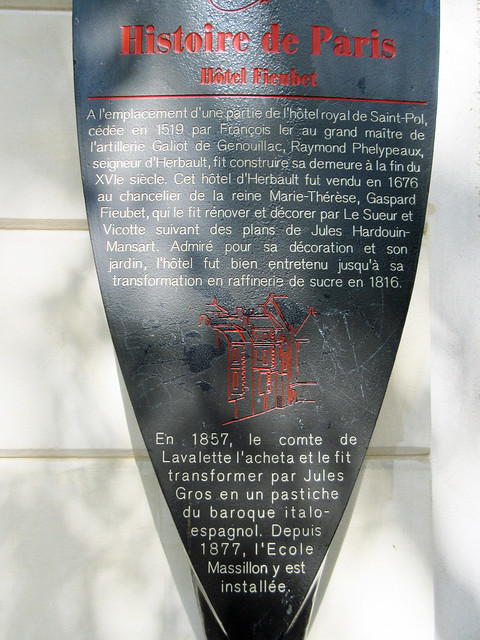Hôtel Fieubet. A l'emplacement d'une partie de l'hôtel royal de Saint-Pol, cédée en 1519 par François 1er au grand maître de l'artillerie Galiot de Genouillac, Raymond Phelypeaux, seigneur d'Herbault, fit construire sa demeure à la fin du XVIe siècle. Cet hôtel d'Herbault fut vendu en 1676 au chancelier de la reine Marie-Thérèse, Gaspard Fieubet, qui le fit rénover et décorer par Le Sueur et Vicotte suivant des plans de Jules Hardouin-Mansart. Admiré pour sa décoration et son jardin, l'hôtel fut bien entretenu jusqu'à sa transformation en raffinerie de sucre en 1816. En 1857, le comte de Lavalette l'acheta et le fit transformer par Jules Gros en un pastiche du baroque italo-espagnol. Depuis 1877, l'Ecole Massillon y est installée.
2 Quai des Célestins, Paris
Google Streetview
OpenStreetMap
Subjects
None identified yet. Subjects are curated by hand so please bear with us.

